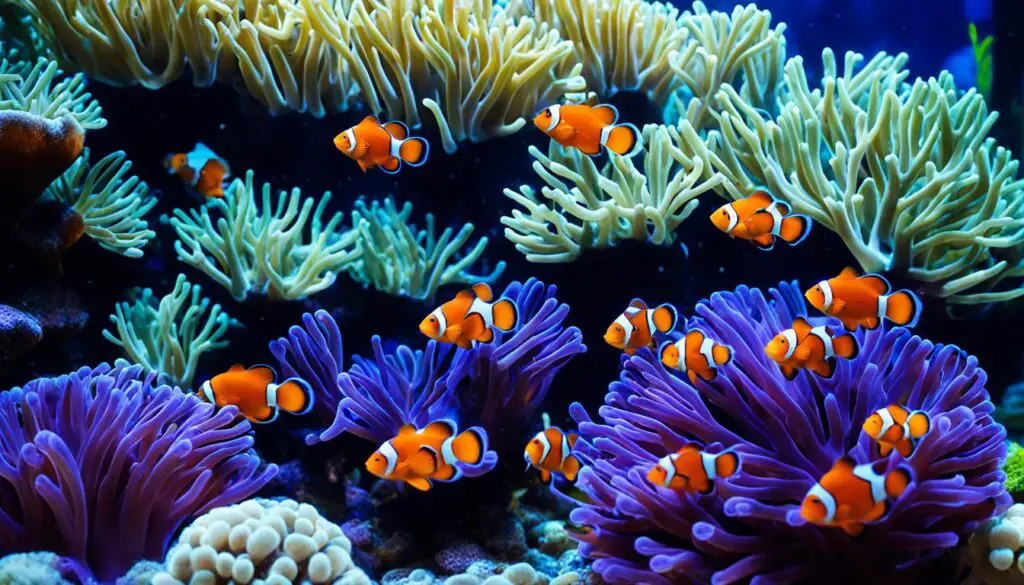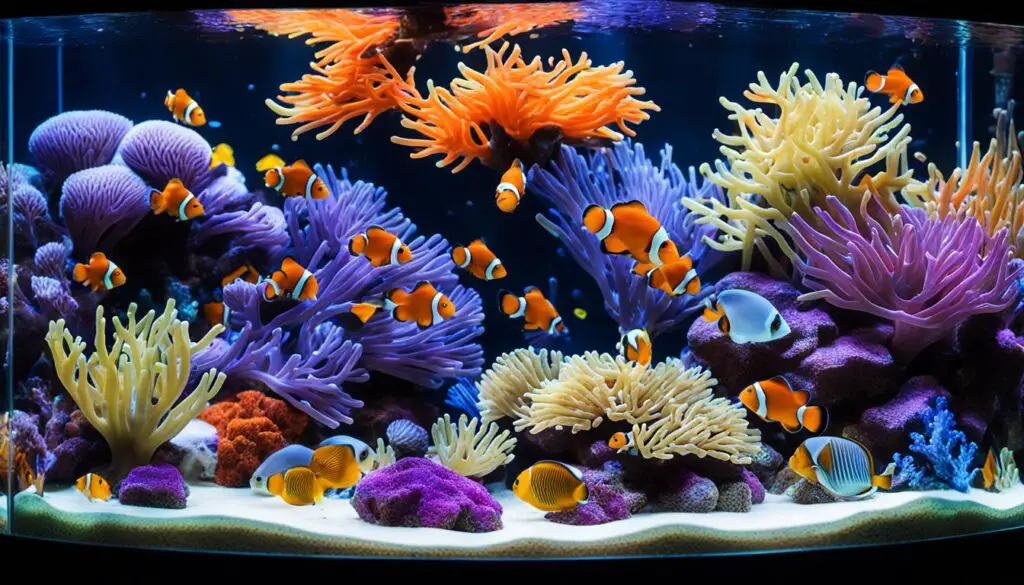How To Take Care Of A Seahorse
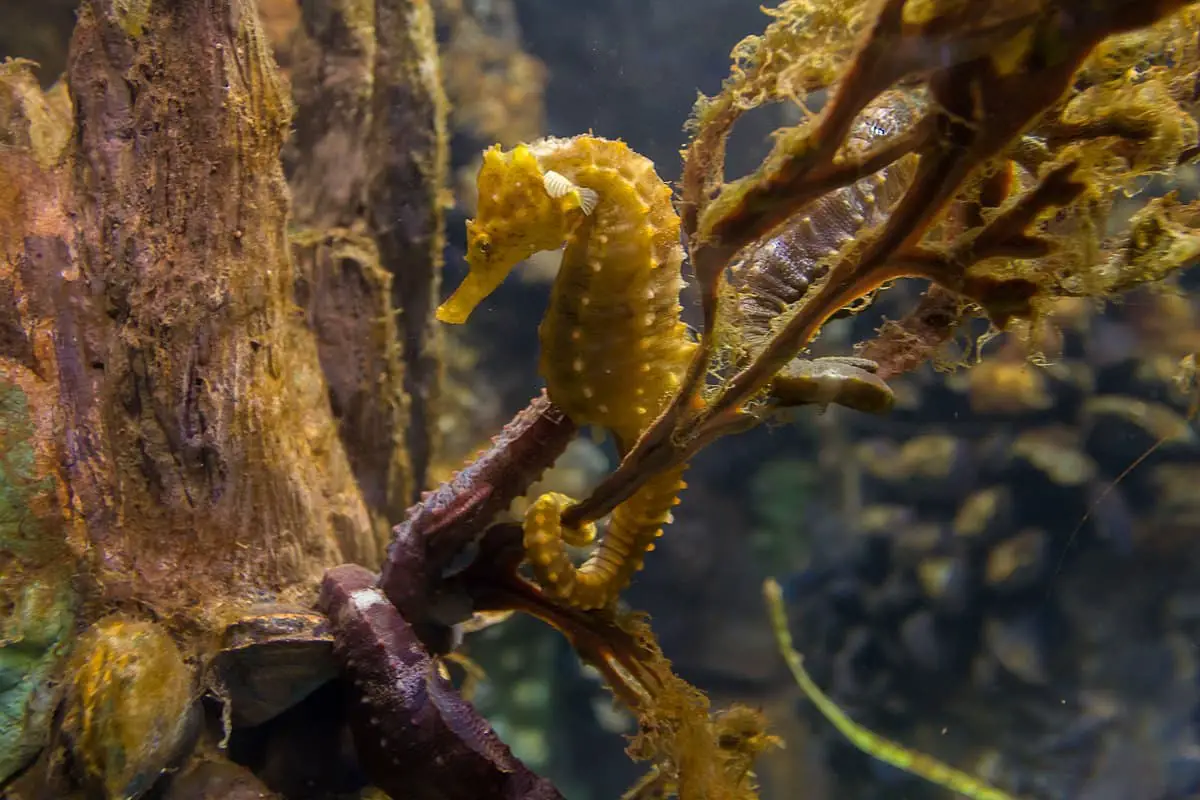
Introduction
How To Take Care Of A Seahorse: Seahorses are fascinating creatures that have captured the imagination of people around the world. With their unique appearance and gentle nature, these delicate marine animals have become popular pets for many aquarium enthusiasts. However, taking care of a seahorse requires a specialized approach and a deep understanding of their unique needs.
Seahorses belong to the Syngnathidae family, which also includes pipefish and sea dragons. They are found in shallow tropical and temperate waters, often clinging to seagrass beds or coral reefs. These small creatures are known for their distinctive horse-like head, long snout, and prehensile tail, which they use to anchor themselves to their surroundings. Seahorses are also famous for their ability to change color and blend in with their environment, making them excellent at camouflaging themselves from predators.
When it comes to caring for a seahorse bits, there are several important factors to consider. Firstly, their tank setup should mimic their natural habitat as closely as possible. This means providing them with a tank that has plenty of live rock, seagrass, and coral for them to anchor themselves to. The tank should also have a gentle water flow, as seahorses are not strong swimmers and can easily become stressed in turbulent waters.
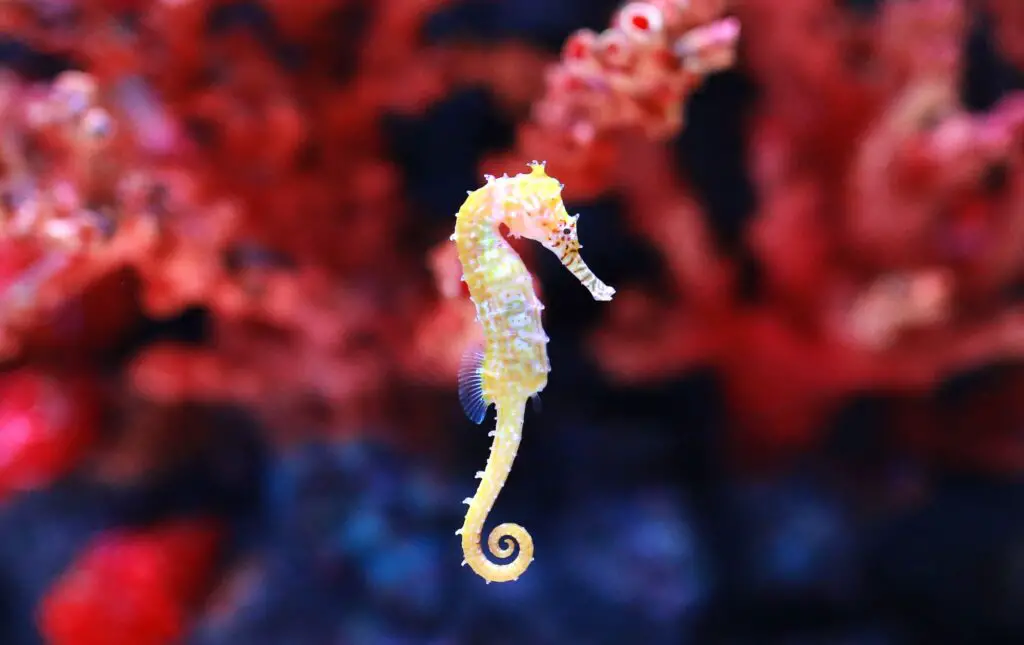
Is it hard to take care of a seahorse?
The seahorse is almost mythical in form, with its horselike head strangely mated with an armored, serpentine body. Seahorses are fantastic creatures to observe in aquaria, and with a little advanced planning and research, they are not much more difficult to keep than many other fish.
Taking care of a seahorse can be a challenging task, as these unique creatures have specific needs and requirements. Seahorses are delicate and sensitive animals that require a specialized environment and diet to thrive. Therefore, it is important to have a good understanding of their care requirements before deciding to keep them as pets.
One of the main challenges in caring for seahorses is providing them with the right habitat. Seahorses are native to coral reefs and seagrass beds, so it is important to recreate a similar environment in their tank. This includes providing them with plenty of live rock or artificial structures for them to anchor themselves to, as well as a substrate that mimics the sandy bottom of the ocean. Additionally, seahorses require a tank with a slow water flow, as they are not strong swimmers and can easily become stressed in turbulent water.
Another challenge in caring for seahorses is their diet. Unlike most fish, seahorses do not have a stomach and therefore need to eat frequently throughout the day. They have a specialized diet consisting of small live foods such as brine shrimp, copepods, and mysis shrimp. Feeding seahorses can be time-consuming and expensive, as these live foods need to be cultured or purchased regularly to ensure a steady supply.
Furthermore, seahorses are sensitive to changes in water quality. They require pristine water conditions with low levels of ammonia, nitrite, and nitrate. Regular water testing and maintenance are necessary to keep the water parameters stable and within the appropriate range for seahorses. This includes regular water changes and the use of a high-quality filtration system.
Taking care of a seahorse can be a challenging but rewarding experience. It requires a commitment to providing the right habitat, diet, and water conditions for these delicate creatures. With proper care and attention, seahorses can thrive and bring joy to their owners.
What do seahorses need to live?
Just like any other marine fish, Seahorses need mature water that is free of ammonia or nitrite, low in nitrate and low in phosphate.
Seahorses are fascinating creatures that inhabit the world’s oceans. They have unique characteristics and requirements that are essential for their survival. In order for seahorses to live, they need a suitable habitat, proper nutrition, and protection from predators.
Habitat: Seahorses are found in a variety of habitats, including coral reefs, seagrass beds, and mangrove forests. These environments provide seahorses with shelter and protection. Seahorses need structures such as coral branches or seagrass blades to anchor themselves and hide from predators. They also require clean water with the right temperature and salinity levels to thrive.
Nutrition: Seahorses are carnivorous and primarily feed on small crustaceans, such as shrimp and copepods. They have a unique feeding mechanism where they use their long snouts to suck in prey. Seahorses need a steady supply of food to meet their energy requirements. In captivity, they are often fed a diet of frozen or live brine shrimp and mysis shrimp.
Protection from predators: Seahorses are relatively small and vulnerable to predation. They rely on their ability to camouflage and blend in with their surroundings to avoid being detected by predators. Their unique body shape and coloration help them mimic the appearance of seaweed or coral, providing them with a form of protection. Seahorses also have a prehensile tail that allows them to grasp onto objects and avoid being swept away by strong currents.
Seahorses need a suitable habitat, proper nutrition, and protection from predators to live. Understanding and preserving their natural habitats, ensuring a steady supply of food, and implementing conservation measures to protect them from predators are crucial for the survival of these fascinating creatures.
Can you touch a seahorse?
Do not chase, disturb or touch seahorses. Seahorses are a protected species and it is an offence to disturb them. It is an exciting experience to see one but it is best for you and the seahorse to keep your distance and calmly observe. If the seahorse swims away, do not pursue it.
Seahorses are fascinating creatures that have captured the curiosity of many people. With their unique appearance and behavior, it’s natural to wonder if you can touch a seahorse. However, before attempting to interact with these delicate creatures, it’s important to understand their biology and the potential impact of human touch.
Seahorses are marine fish that belong to the genus Hippocampus. They are known for their horse-like appearance, with a long snout, a curled tail, and a bony exoskeleton. Unlike most fish, seahorses have a unique way of swimming, using their dorsal fin to propel themselves forward while their pectoral fins steer. They are also known for their ability to change color and blend in with their surroundings, making them excellent at camouflage.
One of the most distinctive features of seahorses is their prehensile tail, which they use to anchor themselves to objects in their environment. This tail allows them to hold onto seagrass, coral, or other structures, providing stability in the often turbulent ocean currents. It also enables them to remain stationary while waiting for prey to come within striking distance.
Given their delicate nature and unique adaptations, it is generally not recommended to touch seahorses. Seahorses have a thin layer of skin that is easily damaged, and human touch can disrupt their delicate balance. Touching a seahorse can also remove the protective mucus layer that covers their skin, making them more susceptible to infections and diseases.
Furthermore, seahorses are not accustomed to being handled and may become stressed or agitated when touched. Stress can have a negative impact on their health and well-being, potentially leading to a shortened lifespan or other adverse effects. It’s important to respect their natural behavior and observe them from a distance to ensure their continued survival in their natural habitat.
Can you keep a single seahorse?
The most trouble-free way to maintain pet seahorses is to keep only individuals or bonded pairs in each tank. A bit more challenging is keeping small groups of a single species, or herds. It is possible to successfully house different species of seahorses (and maybe other syngnathids) together in the same tank.
Keeping a single seahorse as a pet is a topic that often sparks debate among aquarium enthusiasts. While some argue that seahorses are social creatures and should be kept in pairs or groups, others believe that it is possible to keep a single seahorse successfully. Ultimately, the decision to keep a single seahorse should be based on careful consideration of the seahorse’s needs and the owner’s ability to provide a suitable environment.
Seahorses are unique creatures that require specialized care. They are delicate and sensitive animals that can be easily stressed in captivity. In the wild, seahorses form monogamous pairs and rely on each other for companionship and support. This has led some experts to believe that seahorses should be kept in pairs or groups to mimic their natural social structure.
However, there are also arguments in favor of keeping a single seahorse. Some seahorses may not tolerate the presence of another seahorse and may become aggressive or territorial. In these cases, keeping a single seahorse may be the best option to ensure the well-being of the animal. Additionally, keeping a single seahorse can simplify the care routine and reduce the risk of disease transmission.
It is important to note that keeping a single seahorse requires careful attention to its needs. The tank should be appropriately sized and equipped with suitable hiding places and live rock for the seahorse to anchor itself. The water quality should be closely monitored, and regular water changes should be performed to maintain optimal conditions. Feeding a single seahorse can also be challenging, as they require a varied diet of live or frozen foods.
While there are differing opinions on whether a single seahorse can be kept as a pet, it is possible to do so successfully with proper care and consideration. Whether to keep a single seahorse or a pair ultimately depends on the individual seahorse’s behavior and the owner’s ability to provide a suitable environment.
Do seahorses need sunlight?
Seahorses do not have any special lighting requirements other than the fact that most species prefer low to moderate light levels rather than bright light. Because of this, lighting is another area most seahorse keepers neglect to the detriment of their herd.
Seahorses are fascinating creatures that inhabit the world’s oceans. They are known for their unique appearance and behavior, including their ability to change color and their unusual method of reproduction. One question that often arises is whether seahorses need sunlight to survive.
Seahorses do not require direct sunlight to survive, but they do need light in order to thrive. Like all animals, seahorses rely on light for various biological processes. Light is essential for their growth, metabolism, and overall well-being. However, unlike plants, seahorses do not undergo photosynthesis and therefore do not need sunlight for energy production.
Instead, seahorses obtain their energy from the food they consume. They have a specialized diet consisting mainly of small crustaceans, such as shrimp and plankton. These organisms provide the necessary nutrients and energy for seahorses to survive. However, without adequate light, seahorses may struggle to find their prey and may not be able to feed properly.
Light also plays a crucial role in seahorse reproduction. Seahorses are unique in that it is the males who carry and give birth to the young. During the mating process, seahorses perform an elaborate courtship dance, which often involves changing colors and displaying intricate patterns. This dance is typically performed in well-lit areas, as it helps the seahorses attract mates and communicate their readiness to reproduce.
Furthermore, light is important for the development of seahorse embryos. After mating, the female seahorse deposits her eggs into the male’s brood pouch, where they are fertilized and develop. The pouch provides a safe and controlled environment for the embryos, but it also requires adequate light for proper development. Without sufficient light, the embryos may not develop properly, leading to complications or even death.
Seahorses have unique dietary requirements that differ from other fish species. They are carnivorous and primarily feed on small crustaceans, such as brine shrimp and mysis shrimp. These prey items provide essential nutrients like protein and fatty acids that are crucial for the seahorse’s health and growth. It is important to note that seahorses have a high metabolic rate, so they need to be fed frequently to meet their energy demands.
Typically, seahorses should be fed 2 to 3 times a day. However, it is essential to monitor their feeding behavior and adjust the frequency accordingly. Overfeeding can lead to digestive issues and water quality problems in the tank. It is recommended to offer small, frequent meals rather than large portions to ensure the seahorses can consume their food within a few minutes. Additionally, providing a varied diet by incorporating other small marine organisms like copepods or amphipods can help meet their nutritional needs.
What are the ideal water conditions for a seahorse tank and how should the water be maintained?
Seahorses require specific water conditions in order to thrive in a tank environment. The ideal temperature for a seahorse tank is between 72°F and 78°F, with a pH level of 8.1 to 8.4. It is important to maintain stable water parameters, as sudden changes can be stressful for seahorses and may lead to health issues. Regular monitoring of water quality is crucial, and a reliable test kit should be used to check ammonia, nitrite, and nitrate levels.
In addition to temperature and pH, seahorses also need clean and well-oxygenated water. A good filtration system is essential to remove waste and maintain water clarity. It is recommended to use a protein skimmer to help remove organic compounds and maintain water quality. Regular water changes of 10-20% every 1-2 weeks are necessary to replenish essential minerals and remove accumulated toxins.
Are there any specific tank mates that should or should not be kept with seahorses?
When it comes to choosing tank mates for seahorses, it is important to consider their unique needs and behaviors. Seahorses are delicate creatures that require a calm and peaceful environment to thrive. Therefore, it is recommended to avoid keeping them with aggressive or territorial fish species. These types of tank mates can cause stress to the seahorses, leading to health issues and even death.
Instead, it is best to choose tank mates that are peaceful, slow-moving, and non-competitive for food. Some suitable tank mates for seahorses include pipefish, gobies, and certain species of small, peaceful reef fish. These species have similar water requirements and behaviors, making them compatible companions for seahorses.
It is important to note that even with compatible tank mates, proper acclimation and monitoring are crucial. Introducing new tank mates should be done gradually to minimize stress and ensure compatibility. Additionally, regular observation of the tank dynamics is necessary to identify any signs of aggression or stress among the inhabitants. If any issues arise, it may be necessary to separate the seahorses from their tank mates to maintain their well-being.
What are the common health issues that seahorses may face and how can they be prevented or treated?
Seahorses, like any other living creatures, are susceptible to various health issues. One common health problem that seahorses may face is a bacterial infection. This can be caused by poor water quality or stress. To prevent bacterial infections, it is crucial to maintain a clean and well-filtered tank. Regular water changes and proper filtration can help keep the water quality in check. Additionally, reducing stress levels by providing a calm and peaceful environment for the seahorses can also help prevent bacterial infections. If a seahorse does develop a bacterial infection, it is important to consult a veterinarian who specializes in aquatic animals for proper diagnosis and treatment.
Another health issue that seahorses may encounter is a parasitic infection. Parasites such as flukes or worms can affect the seahorse’s overall health and well-being. To prevent parasitic infections, it is essential to quarantine any new seahorses before introducing them to an existing tank. This allows for observation and treatment if necessary. Regularly inspecting the seahorses for any signs of parasites, such as excessive scratching or unusual behavior, is also important. If a seahorse is diagnosed with a parasitic infection, appropriate medications prescribed by a veterinarian should be administered.
Are there any specific breeding considerations or techniques for seahorses?
When it comes to breeding seahorses, there are several important considerations and techniques to keep in mind. Firstly, it is crucial to have a well-established and mature tank before attempting to breed seahorses. This means ensuring stable water conditions, proper filtration, and a healthy environment for the seahorses to thrive in. It is also important to have a separate breeding tank or area where the seahorses can mate and the eggs can be protected.
Seahorses are unique in that it is the males who carry and give birth to the young. Therefore, it is essential to have a sufficient number of males and females in the breeding tank to ensure successful mating. It is recommended to have a ratio of one male to two or three females to increase the chances of successful breeding.
During the breeding process, it is important to closely monitor the seahorses and provide them with a suitable diet rich in nutrients. This can include live or frozen foods such as brine shrimp, mysis shrimp, and copepods. Additionally, maintaining stable water conditions and regular water changes are crucial for the health and well-being of the seahorses during the breeding process.
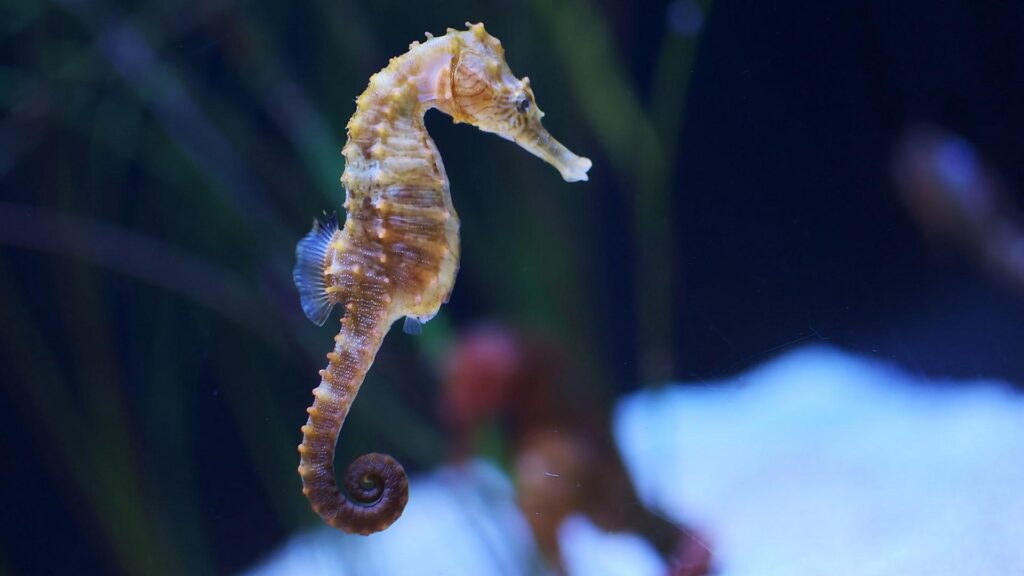
Conclusion
Taking care of a seahorse requires a great deal of knowledge and dedication. These unique creatures have specific needs that must be met in order for them to thrive in captivity. By providing the right environment, diet, and attention, you can ensure the health and happiness of your seahorse.
First and foremost, creating the proper habitat is essential for seahorse care. Seahorses are delicate creatures that require a well-maintained tank with specific water conditions. The tank should be at least 20 gallons in size and have plenty of hiding places, such as live rock or artificial plants, for the seahorse to feel secure. The water temperature should be kept between 72-78 degrees Fahrenheit, and the salinity should be around 1.023-1.025 specific gravity. Regular water changes and filtration are also necessary to maintain water quality.
In addition to a suitable habitat, seahorses have specific dietary needs that must be met. These creatures are carnivorous and primarily feed on small crustaceans, such as brine shrimp and mysis shrimp. It is important to provide a varied diet to ensure they receive all the necessary nutrients. Feeding should occur multiple times a day, as seahorses have small stomachs and need frequent meals. It is also crucial to ensure the food is properly sized for the seahorse to consume without difficulty.
Lastly, seahorses require regular attention and care to thrive. They are social animals and benefit from having a companion of the same species. Regular observation is necessary to monitor their health and behavior. Any signs of illness or distress should be addressed immediately. It is also important to keep the tank clean and free of debris to prevent any potential health issues. By providing the necessary care and attention, you can enjoy the beauty and wonder of these fascinating creatures for years to come.


